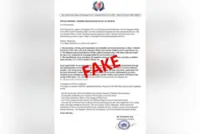Testing it out: Cai with a robot dog designed to help visually impaired people avoid obstacles. — The Straits Times/ANN
They detect intruders, inspect danger zones and guide the blind.
Robot dogs have found no shortage of work in Singapore – taking on jobs in underground maintenance areas, construction sites and even in social services.





